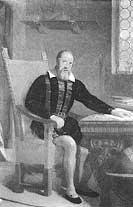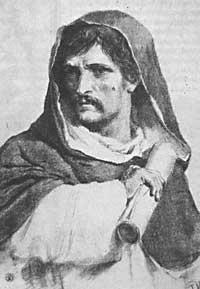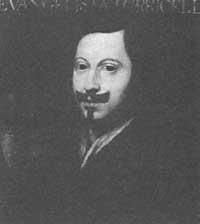A milestone: Galileo Galilei
1991/07/01 Bandres Unanue, Luis Iturria: Elhuyar aldizkaria
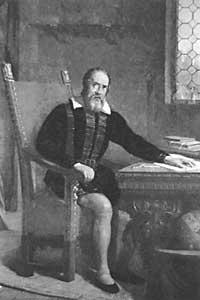
GALILEO Galilei (1564-1642), one of the greatest exponents of conflict in the genesis of modern science, was born in Pisa (Italy) in 1564, when Shakespeare was born and Michael Angelo died. His father was a nobleman from Florence, but with little money. Galileo bowed to poetry, music and classics. His fondness for mechanics soared very soon. When he was a medical student at the University of Pisa, he invented a tool to accurately measure pulsations. Apparently, Galileo took a violent stance against the immutable opinions of the great or wise of that time.
After reading the works of Euklides and Archimedes, he went from medicine to physics and his great gifts in this field were soon noticed. At the age of 26 he was appointed professor of mathematics at the same university of Pisa. He continued with the above attitude. He rose against the usual attire of the faculty, writing a satirical poem against the use of the Toga. He attacked the opinions of most of his comrades, most of them followers of Aristotle, dogmatic and closed, that is, owners of all truth.
Around 1590 Galileo, in Pisa, made a public essay to see the speeds of the different floors. For this he went up to the bell tower of Pisa and dropped some floors. We do not know if it is real or legend, but as it is so widespread and accepted as a landmark of Physics, it will not be useless to bring some of the lines of a last lexicon (Vincenzo Viviani):
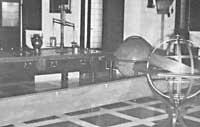
To him (Galileo) it seemed that it was necessary to know the real character of the movement for the investigation of the natural effects, so he devoted himself totally to his study. And then, mixing all the philosophers, he showed that many of Aristotle's views on the nature of the movement that until then were considered good and unmistakable. Among other things, that the speed of the moving bodies of the same nature, but of different weight, when moving in the same area does not have to do with the proportion of the weights (Aristotle affirmed that yes), but all move at the same speed. And this proved to other teachers, philosophers and all their students through repeated experiments from the bell tower of Pisa.
In 1591 the father of Galileo, leaving many children, died. Galileo's salary in Pisa was not very prosperous and his position as a teacher would normally not give it to him after three years; due to the attacks on Aristotle, he had many enemies. Fortunately, he won a new contract in Padua, where he spent eighteen years with better pay and in a more comfortable environment. His wife, Marina Gamba, gave him three children, but when Galileo returned to his native land in 1610, Florence, he abandoned her.
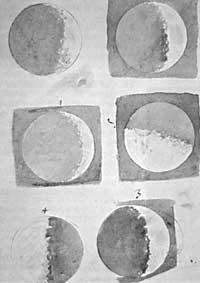
In Padua, in the Republic of Venice, Galileo began working on astronomy. The proof that he accepted the Copernican system was found in two letters written in 1597. In one of them, in writing to Kepler, Galileo recognized that during the year he was a supporter of Copernicus and found physical arguments in favor of the Earth movement. However, he paid little attention to Kepler's work and did not accept Kepler's ellipses instead of the usual circles.
In 1609 Galileo discovered that a Dutchman had managed to see the image of distant objects by means of two attached lenses. Based on this, he built his own telescope and directed it to kneading. He taught the Venetian authorities to recognize with his instrument the ships that approached the city before seeing them at first sight. With this advance, Galileo earned a teaching post forever and a much better salary.
Still, Galileo had nostalgia. His book Sidereus Nuncius (the celestial fiador, more or less the history of the first discoveries with telescope) dedicated it to the Chief Duke of Tuscany, Cosimo Medici, and called to meditate the satellites found in Jupiter. In this way he intended to obtain the help of the duke to finance his investigation without any other commitment.
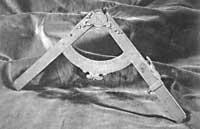
Returning to his Tuscany, he was a mathematician and philosopher of the Court after a prolific offer of the Duke Major in 1610. Until his death (1642, at 78), Galileo's life was a history of constant work: studies, teaching, writing, etc., despite the health and family difficulties and the conflicts of his rivals.
Galileo and astronomy
In 1610 Galileo published the aforementioned book Sidereus Nuncius. In it he tells us the findings made with telescope:
- The planet Jupiter revolves around it with four other smaller planets. Kepler and his astronomers later called them satellites. (Today we know that Jupiter has at least twelve satellites.) However, the presence of one of these satellites was an attack for regular believers for two reasons:
a) For many philosophers, apart from the stars, there were only seven celestial bodies. Therefore, it was metaphysically impossible to find another (in 1611 the Florentine astronomer Francesco Sizi showed that it was not possible for Jupiter to have satellites: In the head there are only seven windows: in the nose there are two holes, two eyes, two ears and one mouth. In the kneading are only the two stars on the side, the two opposite, the two illuminators and the solitary Mercury, certainly anxious. From here and now we conclude that the amount of planet that is wanted and not seven, would be boring thanks to other minute phenomena of Nature, such as the seven metals, etc... Moreover, the Jews and other ancient nations, and the present Europeans, have divided the week into seven days and have been designated according to seven planets. If we increase this amount, the system breaks... Therefore, they do not exist) .b) All kneading bodies appear to be spinning around the Earth, while Jupiter's satellites revolved around it. Therefore, Earth was not to be the center of all the bodies of the universe and that could not be allowed.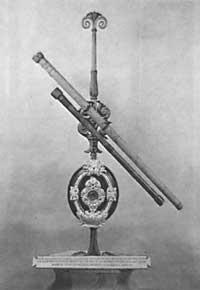 Galileo invented and created the telescope.
Galileo invented and created the telescope. - Regarding observations made through the telescope: The surface of the Moon was not smooth, uniform and totally spherical, as many philosophers thought, but rough and full of holes and summits. Like the earth's surface, it was crossed by mountains and deep valleys. According to the egocentric system, all the kneading bodies had to be perfect, that is, spherical and without differences. On the contrary, Galileo saw mountains on the Moon and poles on the Sun.
- Fixed stars with a telescope do not look much larger, that is, they appear as light points. Therefore, you may think they are far away.
- The Camino de Leche, which at first sight appears as an area of continuous light, with telescope appears formed by thousands of simple stars that are not seen at first sight. This was a great obstacle for those who thought the universe was something at the service of man: Why did God put things that were not perceived in heaven?
Many of Galileo's contemporaries rejected the findings made with a telescope, since it was known that with the lenses a thousand frauds could be committed. The only one who once agreed with him among scientists is Kepler. This wrote a paper in which he affirmed that these findings coincided with his theory. Galileo, after obtaining the help of the greatest astronomer in Europe, was not despicable. However, the shadow of these two famous men was not enough to suddenly eliminate all advances. Scholastics fought hard against these new Copernican ideas. According to them, and because of the forces of actions, heliocentric theory, in addition to theological error, was false, that is, against common sense and observations.
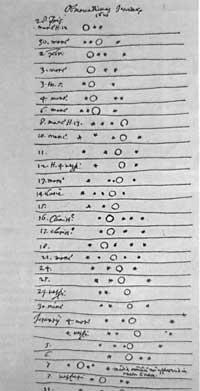
However, Galileo did not shut himself up and for the next two decades he worked for the Copernican system, publishing the Interview on the Two World Systems in 1632. Galileo's expressive observations do not determine for themselves the debate between heliocentric or geocentric theory: accepting any hypothesis the phenomenon would be the same. But Galileo thought the Earth's movement was real: first of all, if we consider the enormous size of the kneading sphere relative to the smallness of the Earth's sphere and the speed of movement it will have to have in order to complete a day and in one day and one night, I cannot think that while the globe is standing, the kneading sphere rotates more rationally and credibly.
As a second point, Galileo recalls that in the geocentric model one must adapt to the planets a reverse motion to the current one of the grip sphere. Why? This hypothesis is unreasonable or harmonic. Third, he discovered that the period of the four satellites of Jupiter was greater as the orbit was greater, which did not fit well with the geocentric theory. All this and a thousand more details can be found in the aforementioned interview, especially about kinematics and free fall. It develops themes between two interlocutors. While Salviati interprets a neutral observer, Simplicio is a person with a common sense of his time. However, it takes him from Salvia to the consequences he himself wants. Let us see in one example (at that time they thought that to have a continuous movement based on Aristotle a force had to act, against the principle of inertia that Newton then put), how Galileo anticipated this principle:
From Salvia: ... if you had a surface as hard as steel and as smooth and slippery as the mirror (but not horizontal, but slightly inclined) and put on a ball of bronze totally spherical, leaving free what do you think would happen?
Simplicio recognizes that the ball would be accelerating constantly in the plane, that it would take a force to keep it still, and that if we removed the discomfort from the air and some other obstacle would always keep moving. Later, he asks what would have to be done to raise the ball on the slope and Simplicio would force and the movement would be slowed down and contrary to Nature.
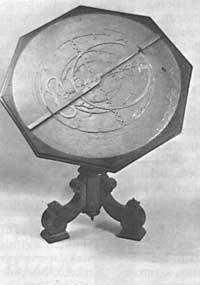
From Salvia: Therefore, say what would happen to that body (if the surface had no inclination, either up or down).
Simpliciok: If at first the body was standing on the plane, it would not move, but if it was given a push, there would be no reason to accelerate or slow down.
From Salvia: Well, there are no causes of deceleration and much less stop. What distance will the body accomplish in its movement?
Simpliciok: Not as much as the distance from the ascending or descending surface.
From Salvia: Therefore, if that surface were infinite, its movement on it would have no end, that is, it would be eternal.
Simpliciok: I think so...
Therefore, based on Aristotle's hypothesis that, when a force is needed to perpetuate an unnatural movement, Simplicius must accept that a movement that was unnatural can remain without any force.
In 1638 Galileo wrote his last book, Bi zientzia berri. In it appears again the theme of inertia, but did not use the study of the movement of the Earth, perhaps before writing this book do not talk again about the movement of the planets because he had to make a solemn oath.
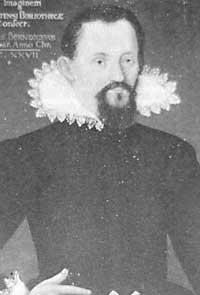
In 1616 the Inquisition ordered him not to teach the theories of Copernicus because his teachings were contrary to the Holy Books. On the other hand, the book of Copernicus was placed in Index Expurgatorius and its reading was forbidden until its correction. But Galileo himself could not rule out the truth. Kopernik based his theory on Aristotelian theory. On the contrary, Galileo in proposing the heliocentric system only mentioned its suitability and usefulness, regardless of faith and salvation. It was the big break!
In 1632, after making some required modifications, he obtained the authorization to publish his Interview. It discusses the relative advantages of the systems of Ptolemy and Copernicus, but it was considered that it had not taken into account the council of the Inquisition in 1616. On the other hand, Galileo's tenacious attitude did not help him at all.
In the development of this history the religiosity of Galileo is of great importance. Despite being a very religious man, the Inquisition considered him suspicious. In his opinion: ... the presence of God has no less admirability in Nature than in the Holy Books. This could be considered at that time as pantheism and, say, that his contemporary Giordano Bruno, several years before (1600), was burned by this heresy.
Galileo, aged and ill, was called to Rome where he was arrested. After the torture he was tried. After formally vowing to reject Copernican's theory, she was banished forever. No one dared to defend her in his Italian friends. His book was placed on the list Index Expurgatorius (in which with Copernicus and some Kepler would last until 1835) and his Abjuratio was read in all Italian pulpits.
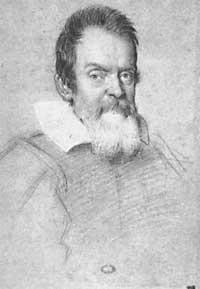
In the life of Galileo we can observe that the demand for both spiritual and ideological obedience brings intellectual obedience, that is, where there is no freedom of conscience there is no free science. The fight against science for authoritarianism, that is, for ignorance against knowledge, has remained until today. Finally, time and scientists limit the problem.
In 1968 the Vatican decided to eliminate the rejection of 1633 against Galileo's theories. Fortunately, these theories did not have to wait so long to yield their harvest. Before the fiftieth anniversary of his death, his works, based on those of Copernicus and Kepler, made known Newton's works and then succeeded in taking the place that his ideas should have in the field of science.

Gai honi buruzko eduki gehiago
Elhuyarrek garatutako teknologia




